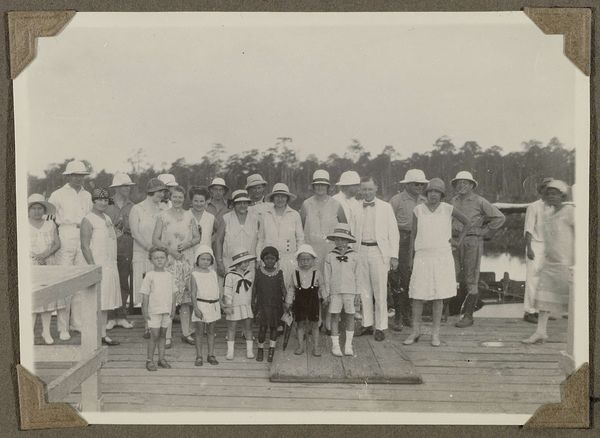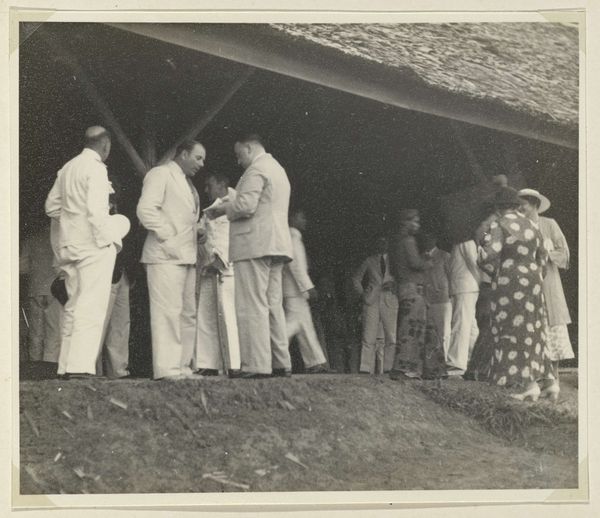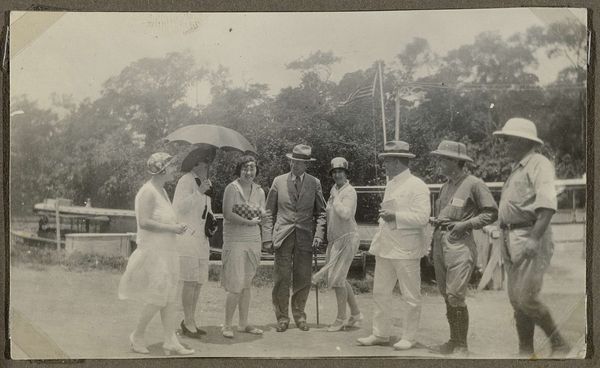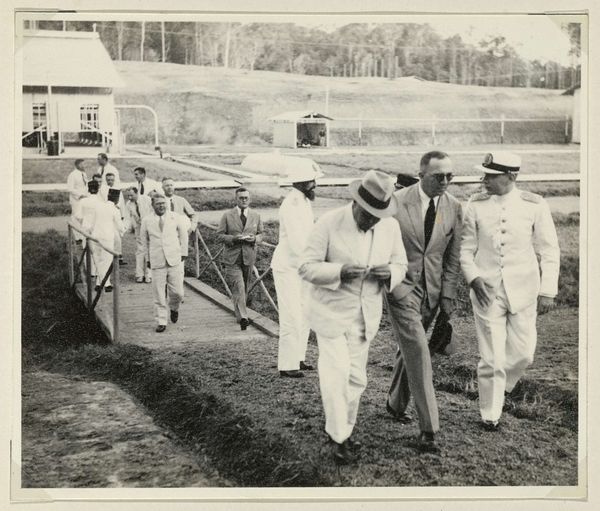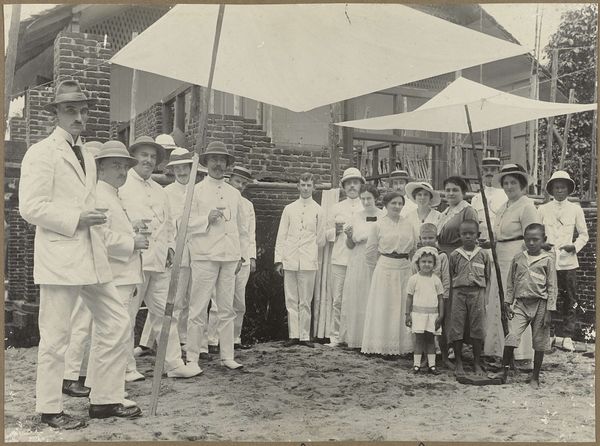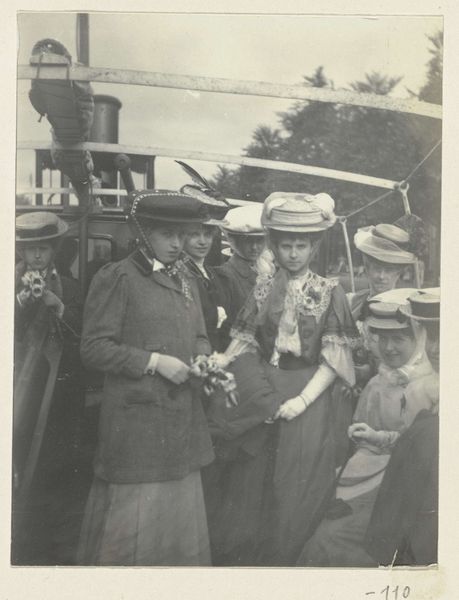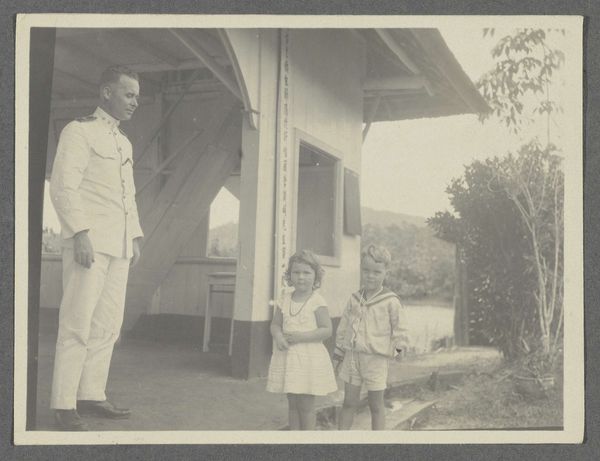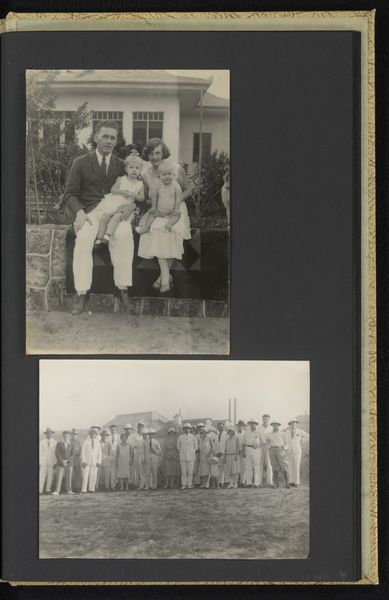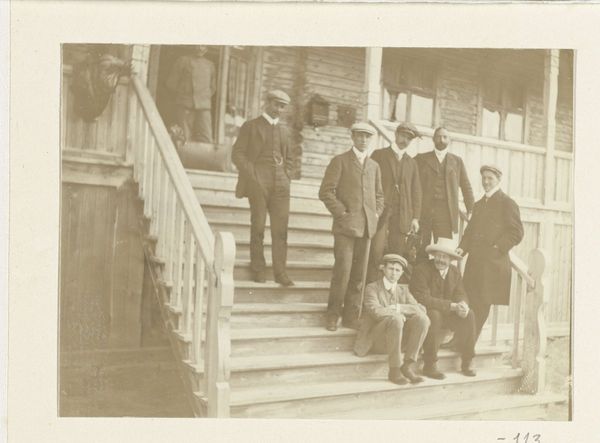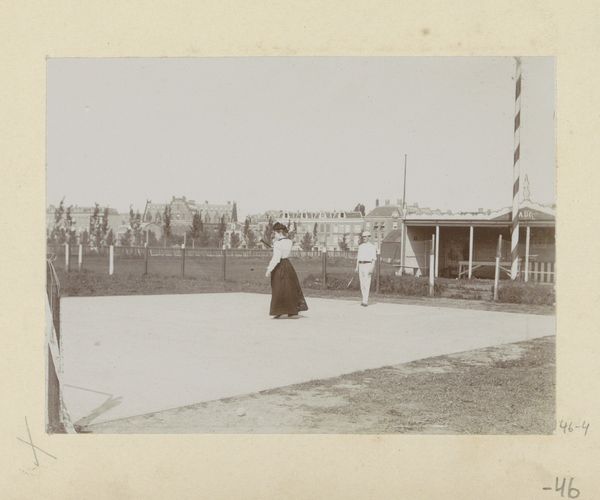
Man met kind op Sumatra, mogelijk Eiso Bergsma en zijn dochter Netta c. 1925 - 1929
0:00
0:00
anonymous
Rijksmuseum
photography, gelatin-silver-print
#
portrait
#
photography
#
gelatin-silver-print
#
genre-painting
#
modernism
Dimensions: height 96 mm, width 138 mm
Copyright: Rijks Museum: Open Domain
Editor: This is an intriguing gelatin silver print, titled "Man with child in Sumatra, possibly Eiso Bergsma and his daughter Netta," dating from around 1925-1929. The high contrast between light and shadow creates a somewhat unsettling feeling despite what looks like a social gathering. How do you read the composition of this work? Curator: From a formalist point of view, the composition strikes me with its spatial arrangements and tonal distribution. Note how the anonymous photographer utilizes a shallow depth of field. The sharp focus on the figures in the foreground draws our attention to their relationship, which exists almost as an intrusion into the space of an elite gathering. Observe the repeated, rigid forms versus the relative naturalism of the man and child; how does that tension contribute to the work's effect? Editor: It feels a bit like the photographer captured a moment that might be a formal public gathering but the child seems out of place among the grown-ups in hats. Almost like they walked in on it. Is that spatial relationship meaningful? Curator: Indeed, it begs questions about societal positioning. Consider the textures and shapes – the dark, solid hats contrasting with the girl's softer clothes, and how that juxtaposition might offer an interpretation of status and social structures within colonial Sumatra. What assumptions does it allow? Editor: The way the people in the background look similar because of their all white clothing compared to the other two... I guess the meaning would change based on if this were a casual snapshot or a planned pose. I had assumed it was happenstance! Curator: Precisely! Without explicit contextual data, we analyze formal elements: line, shape, texture. This brings an alternative viewing experience beyond a surface, narrative one. Editor: That’s really interesting! Focusing on those elements gives me a fresh perspective on how photographs of this period portray class differences and their complex relationships. Curator: And it reminds us of the importance of a purely visual, and sometimes philosophical, approach in decoding the language of art.
Comments
No comments
Be the first to comment and join the conversation on the ultimate creative platform.
